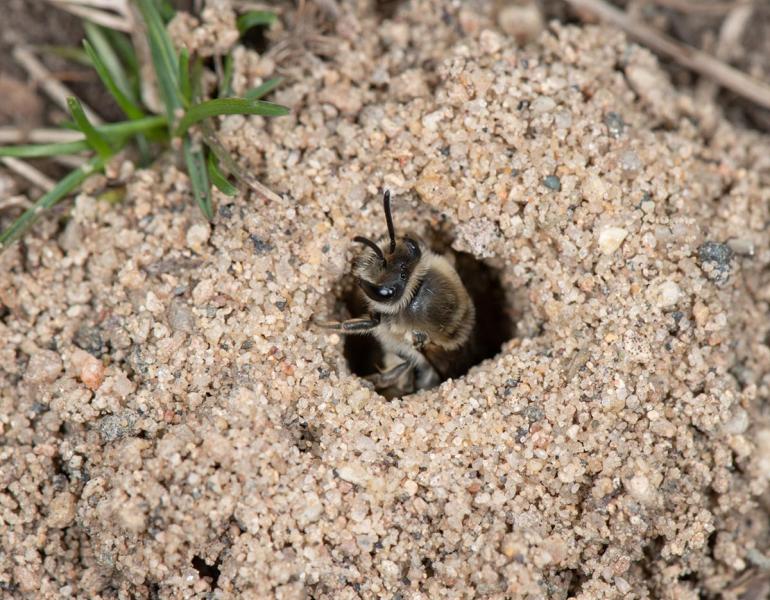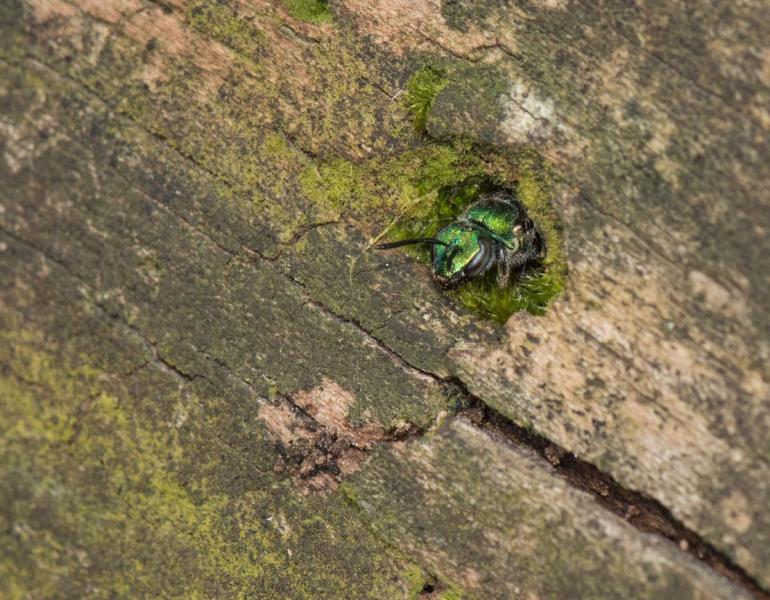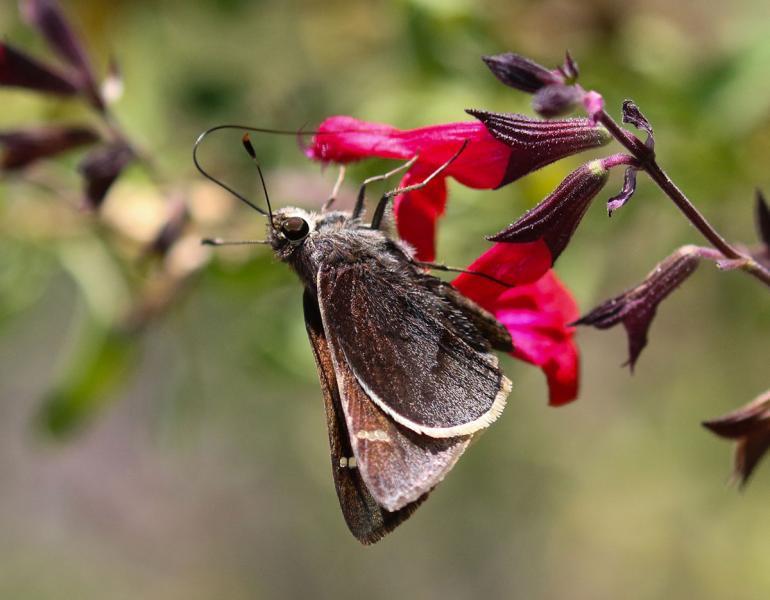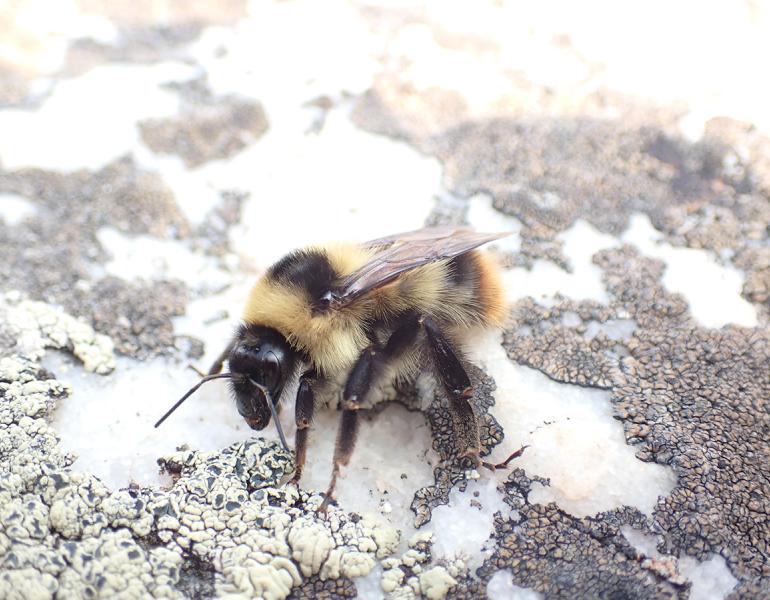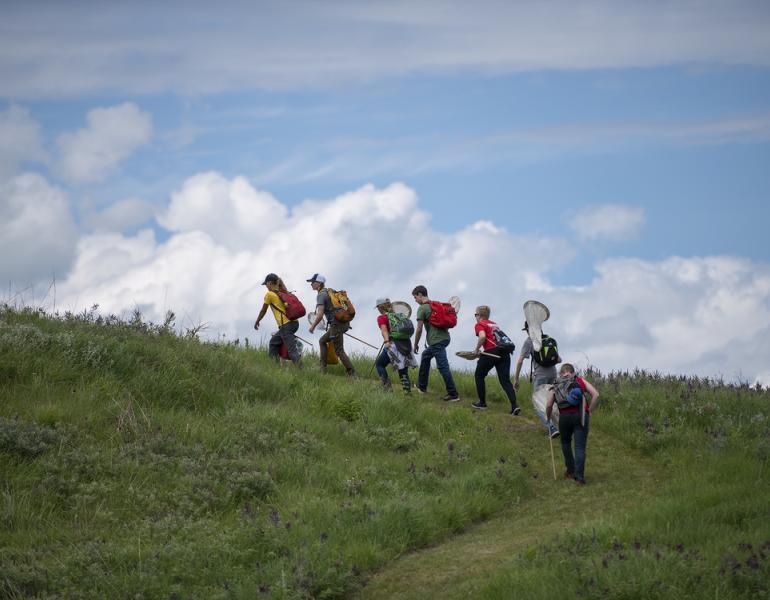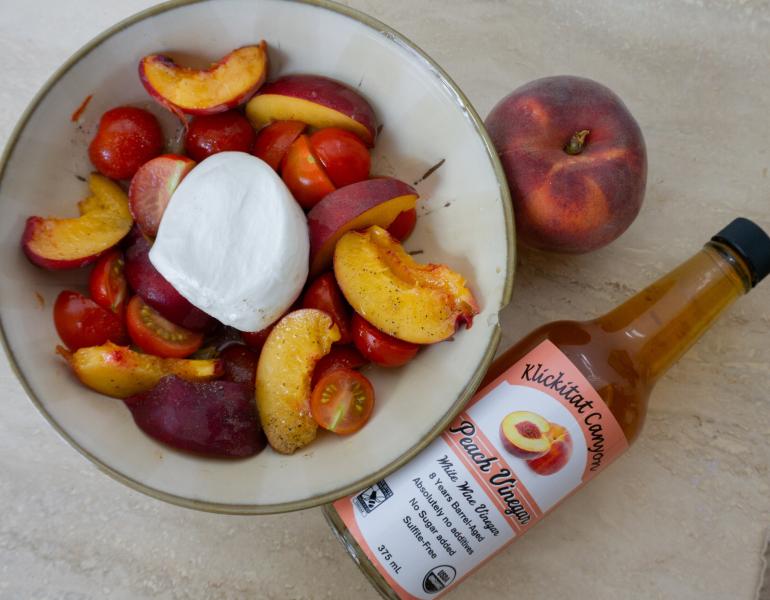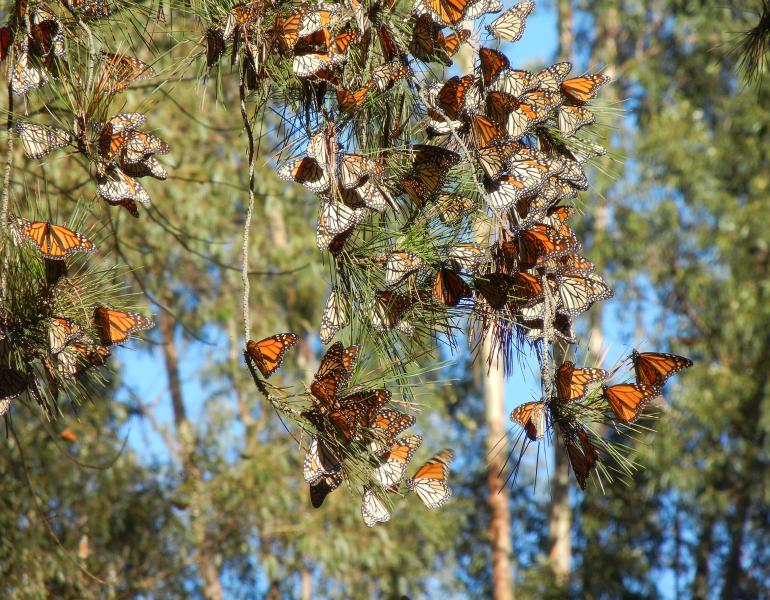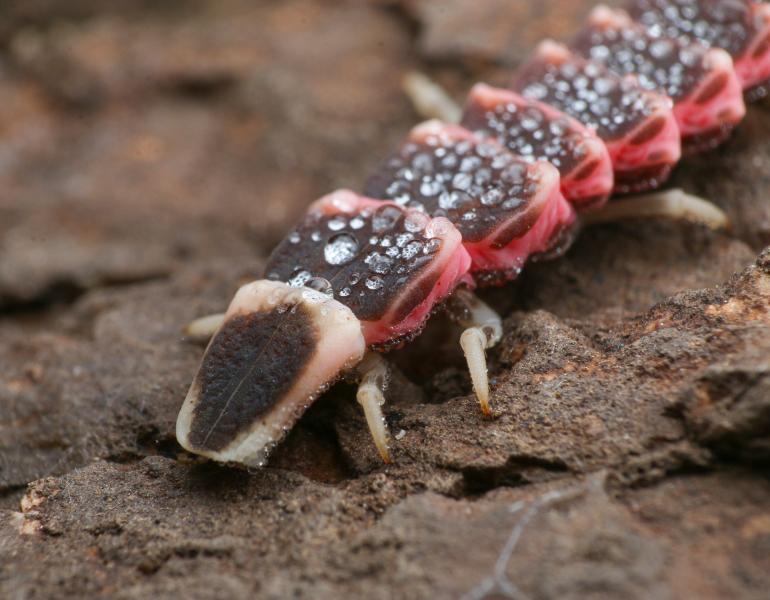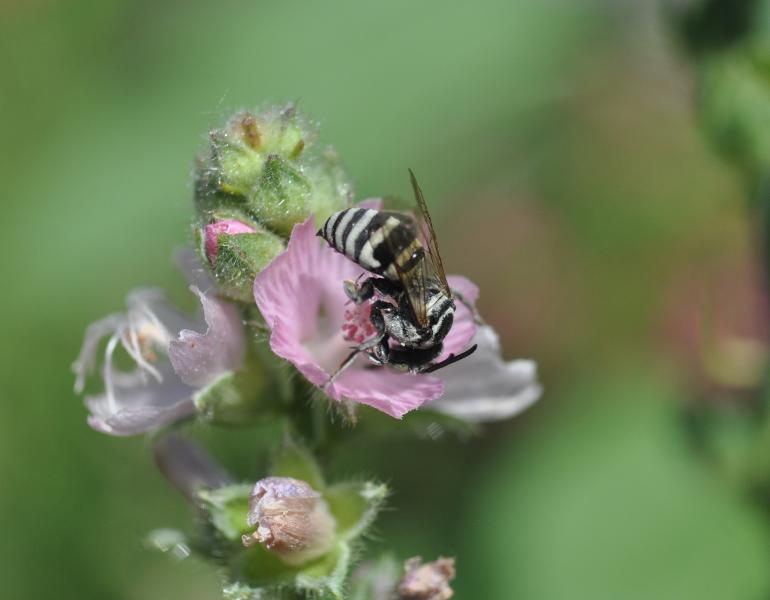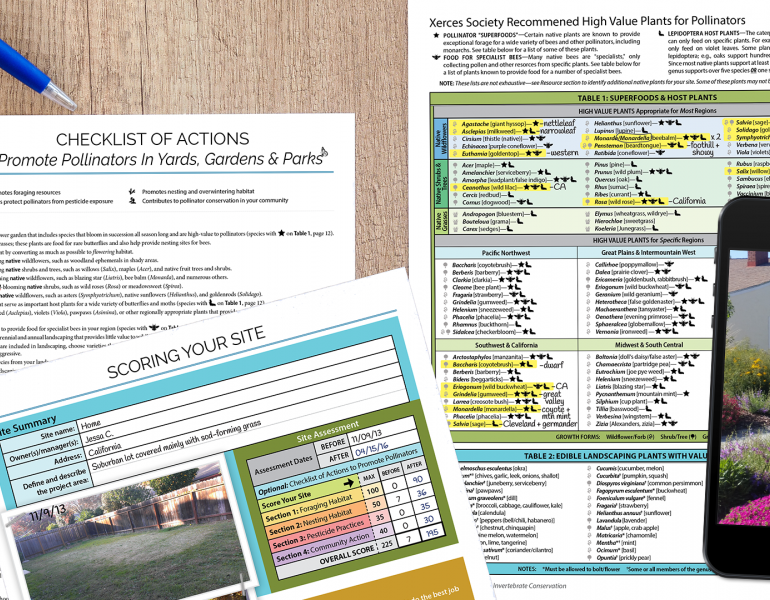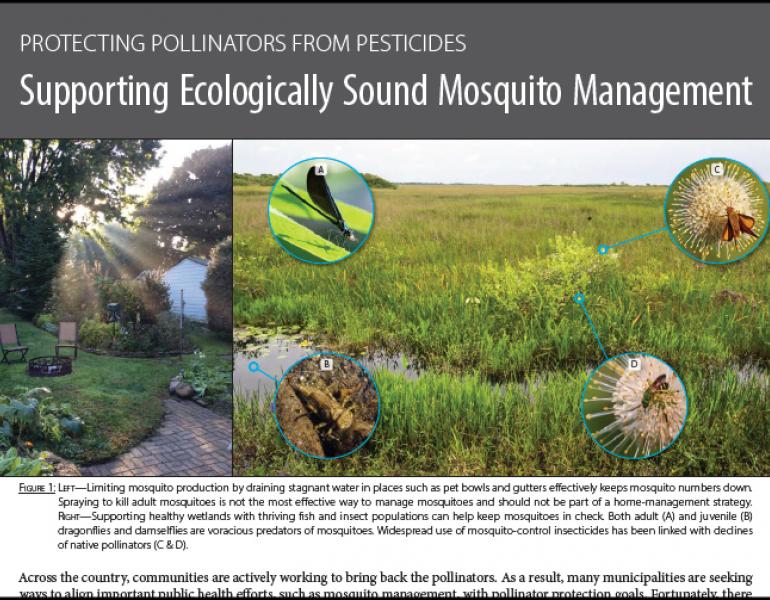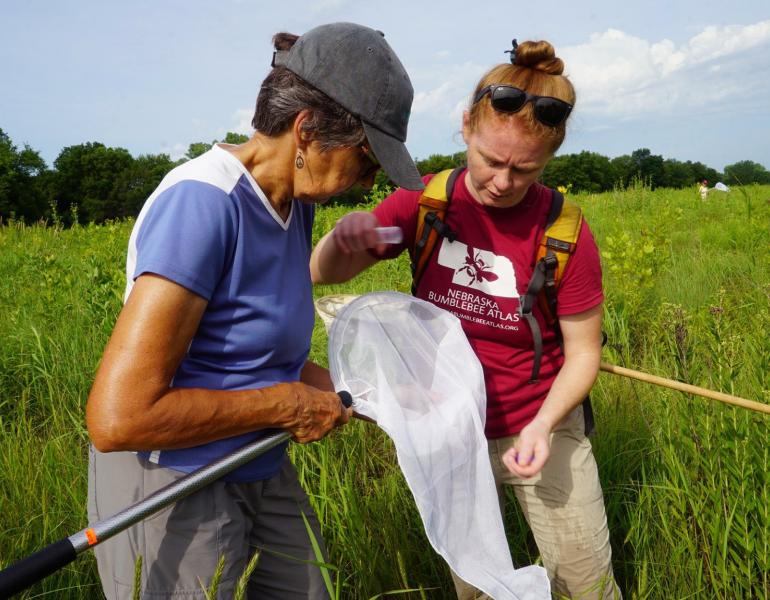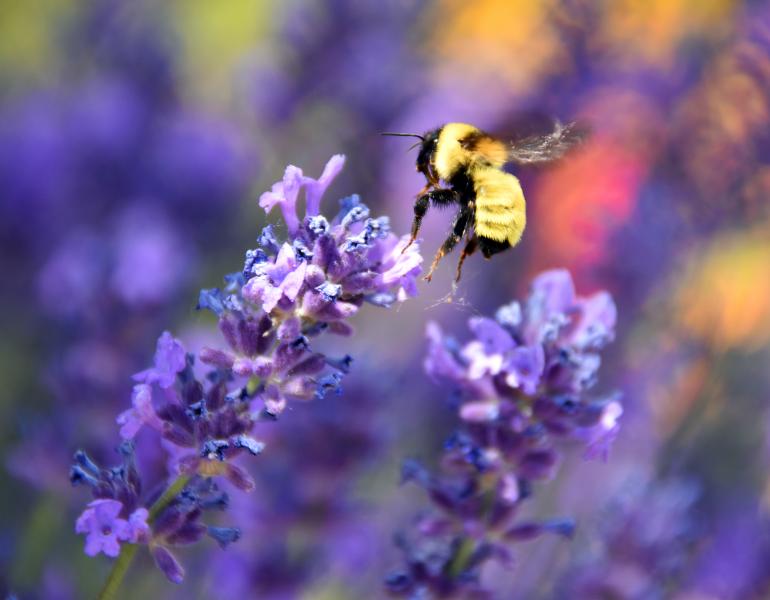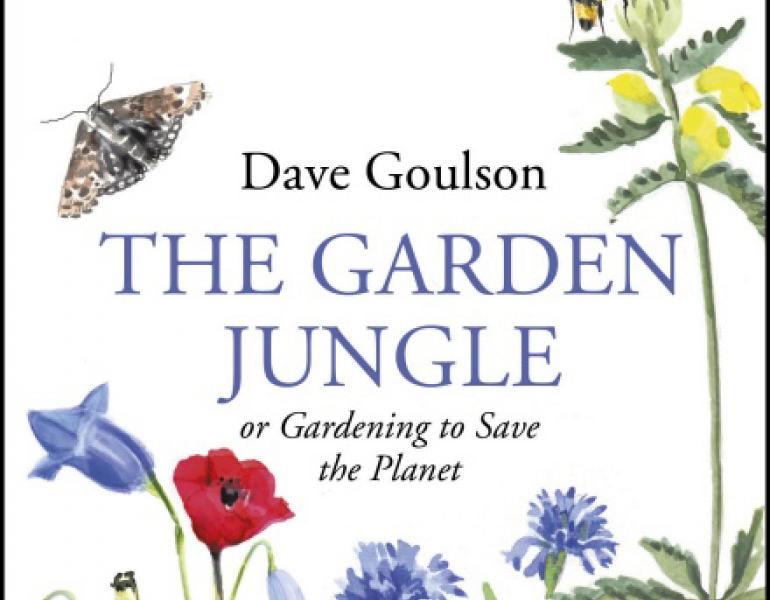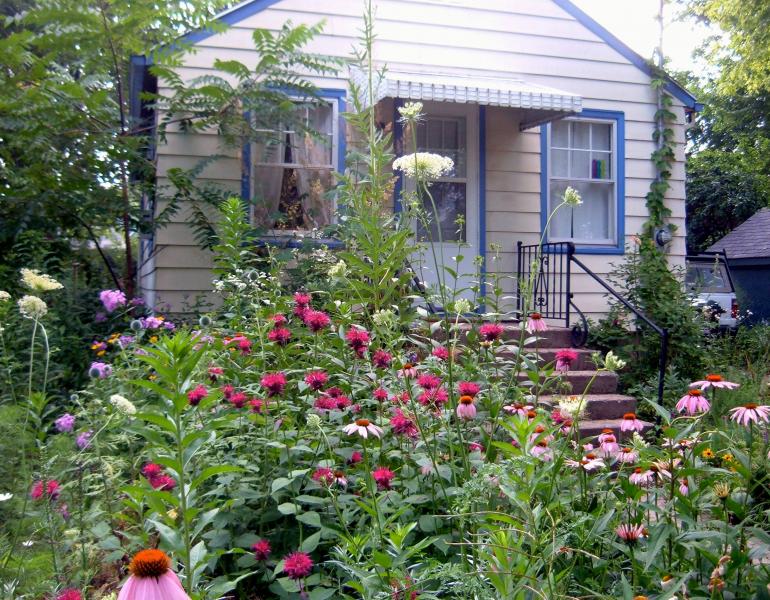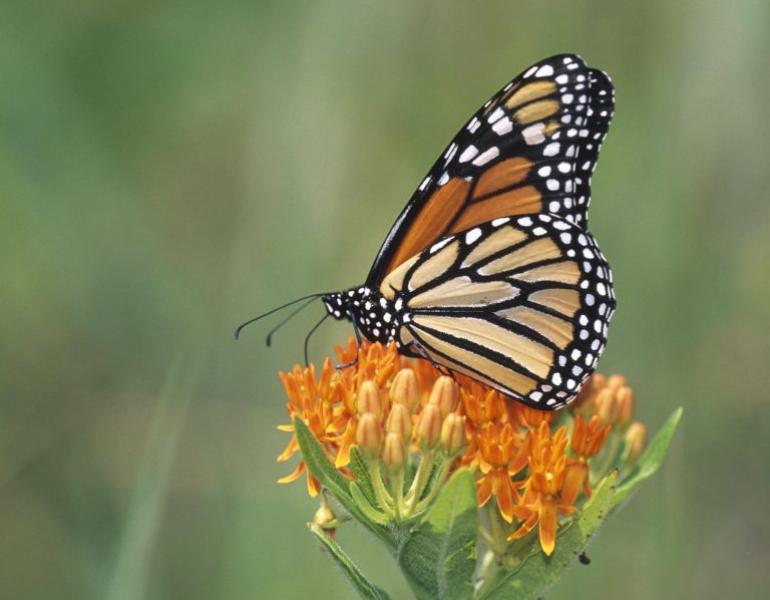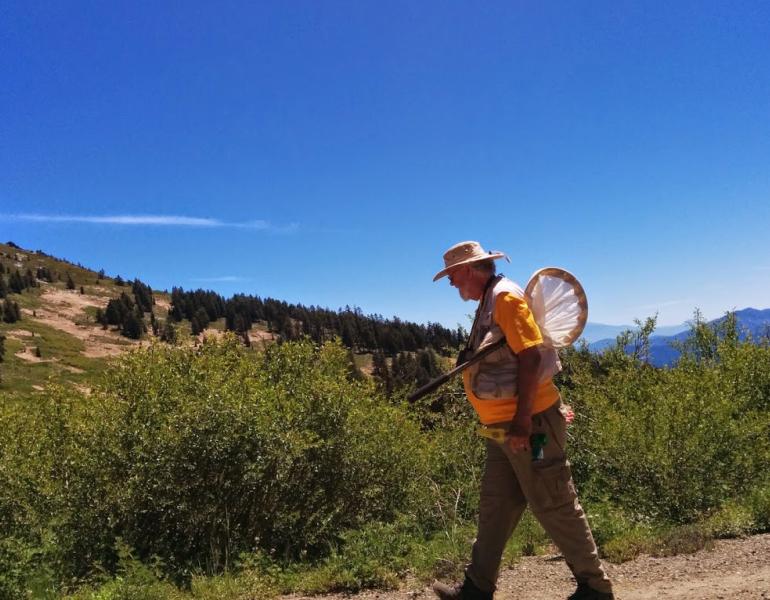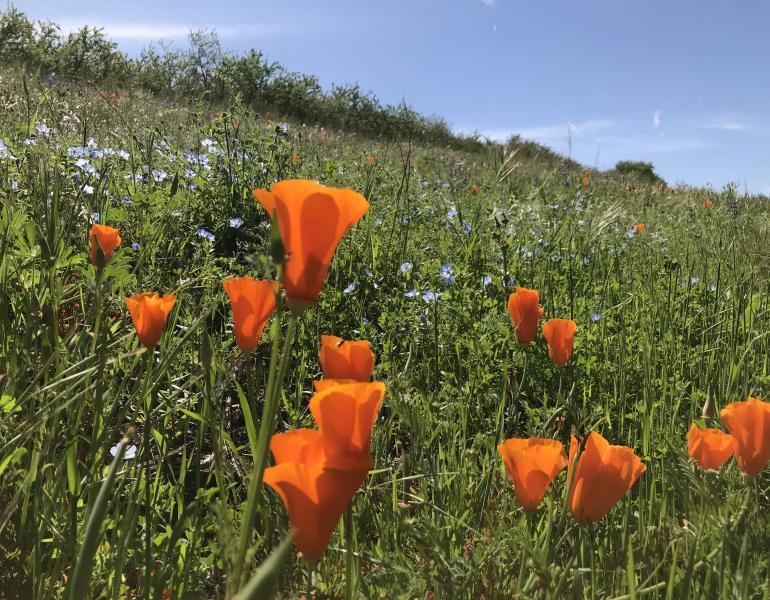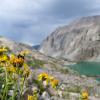Even a humble puddle can make a big impact for your backyard wildlife. Learn how to make one that fits your space.
Earth Week
Description
Stronger Together: How To Build Your Conservation Community This Earth Week
Building your community can help us do more for conservation, and lightens the load and keeps us coming back to the causes we care about. Here's how!
They Go with Everything: Even a Small Patch of Native Wildflowers Makes a Difference
Jennifer Hopwood shares how adding even a few plants is the perfect complement to the other habitat features of your yard, garden, or balcony.
Clear Space for Bees: Why Pollinators in Your Yard Need Access To Bare Ground
Open patches of soil and sand, with few or no plants, are a key nesting habitat for the majority of native bees, and easy for us to provide.
Wildlife on the Rocks: Providing the Rocky Habitats Bugs Need for Shelter
Rock piles and stone walls might seem like they take yard space away from plants, but these features are crucial to support a diverse wildlife community.
Tiny Places for Tiny Animals: Building the Microhabitats that Bugs Need to Thrive
It’s easy to add small features, like a brush pile, dead stems, or a leafy corner that can make a big difference for wildlife! Here's how.
This Earth Day, Celebrate the Stars of Biodiversity: Insects
With over a million invertebrates on earth, they are exemplary specimens for biodiversity. We need your help to advocate for these creatures!
Without State-Level Protection, These Invertebrates Face an Uncertain Future
These nine valuable and vulnerable insects are living in states where state wildlife agencies can't effectively protect them because state law doesn't include insects in the formal definition of wildlife. We're working to change that and protect these incredible invertebrates for years to come.
A Day Without Invertebrates
Individual invertebrates can be easily overlooked, but if we were to lose this group of animals, our world would look and feel significantly different.
Insects Are Wildlife, Too
State wildlife agencies are vital to species conservation, but they can't effectively protect ecosystems when legal barriers exclude certain animals from their jurisdiction. There are several U.S. states that have little or no ability to manage and protect insects.
Ways to Defend Biodiversity this Earth Week
Earth Week only comes once a year, so let's make it count! Defend biodiversity this week with one of these high-impact actions.
For Wildlife and Humans, Native Plants Are a Key to Climate Resilience
In our work, we regularly put an emphasis on the importance of using native plants when creating habitat, whether it’s a new prairie, a farm hedgerow, a meadow in a park, or a flower border in your own backyard. Pollinators are often the principal interest for these types of projects, but the benefits of using native plants go far beyond, including, potentially, into a more climate-resilient future for people and wildlife.
Conserving Desert Pollinators and Water in the Face of Climate Change
One of the most immediate and tangible ways we can prepare for climate change as individuals is to restore native habitat. This not only builds a greater buffer for plants and animals to survive changing conditions, but makes our own gardens and landscapes more prepared to withstand drier or wetter, hotter or colder weather. While it will take everyone to stop rising temperatures at a global scale, I find hope in the cultivation of little patches of earth throughout Santa Fe hosting pollinator habitat kits.
This Earth Week, We’re Finding Hope on the Climate Crisis
The week leading up to Earth Day, now in its 52nd year, is always a great time for reflection for conservationists. For challenges that feel unwieldy, like climate change, taking action helps us to feel less hopeless and more empowered. As we talk with others about what we’re doing and why, we can inspire them to join us.
Bee Better Certified: One Acre at a Time
When we launched Bee Better Certified® in 2017, our sights were set high on a large long-term goal: to move the agricultural industry towards being a safer landscape for bees and other pollinators. Large-scale change happens little by little over an extended period of time, and with each year that passes we continue to see increased interest and adoption of the program throughout the food industry.
Applying a Holistic Approach to Monarch Conservation
Xerces is a science-based conservation organization and our work on monarchs is no different. Whether it is restoring overwintering sites in California, creating breeding habitat in New York State, or protecting monarchs from pesticides, science informs our actions and maximizes our conservation return.
Supporting Firefly Conservation from Coast to Coast
Late spring and early summer are synonymous with fireflies. Females perch on vegetation or sit on the ground while males take flight, flashing their abdomens and awaiting a response from below. For humans, it could just as well be a magic show, a glimmering peek at one of the great wonders of the natural world.
Ask for a Healthier World
Do you want a more bee-friendly community or a different way to control mosquitoes? Change can start with a simple ask. Asking, if done respectfully and with curiosity, can bring empowerment and strengthen community.
The Actual Earth of Earth Week
Soils support the most biologically rich animal communities on earth, outside of our oceans. A single cubic foot of tallgrass prairie soil may contain billions of organisms, and more species diversity than the entire above-ground Amazon rainforest. Yet we think little of this life.
How to Maximize Benefits to Pollinators in Cities and Towns
Pollinators are one of the easiest groups of declining animals to support in a residential landscape, since even small spaces have the potential to meet the most basic needs of the entire insect life cycle—and even simple changes to our landscaping can make a huge difference to these animals. Here at the Xerces Society, we recently created an Urban Habitat Assessment tool, designed to help you see your yard through the eyes of a pollinator, identify areas for improvement, and prioritize actions you can take to promote these insects in your yard and community.
Start Now To Prevent Mosquito-Borne Disease and Keep Our Pollinators Safe
The Xerces Society’s new fact sheet, Smarter Pest Management: Responding to Mosquito-Borne Disease and Protecting Pollinators, highlights ways for everyone to prevent mosquito-borne disease, with recommendations that are backed by the Centers for Disease Control and Prevention (CDC).
Tracking Butterfly Populations through Community Science
Last year, the Xerces Society partnered with the Cascade-Siskiyou National Monument to launchthe Cascade-Siskiyou Butterfly Monitoring Network. Though the 2020 field season is facing uncertainty, there are still ways for you to get involved with butterfly research where you live.
Nebraska Bumble Bee Atlas: Doing a Little to Impact the Whole
The 2020 survey season begins this June. We hope you’ll join us in our quest to learn more about bumble bees and restore Nebraska’s natural habitats.
This Earth Week, Let's Bring Communities Together to Protect Pollinators
Bee City USA provides a framework for communities to work together to conserve native pollinators by providing them with healthy habitat, rich in a variety of native plants, and free to nearly free of pesticides.
Earth Week Reading: Gardening to Save the Planet
Rich Hatfield, Senior Endangered Species Conservation Biologist, writes in this book review, "I was expecting The Garden Jungle: or Gardening to Save the Planet to be a great read, but for me it was more than that."
12 Climate Actions for Earth Week
Some good news (amidst all the bad lately) is that even with physical distancing and shelter-in-place requirements, there are still a lot of actions many of us can take to help in the fight against climate change. Focusing on one or any combination of these actions can help.
How to Support Monarch Butterfly Conservation—During Earth Week and Beyond!
Helping the monarch back to full health isn’t going to be easy or quick, but together we can transform the landscape to allow the monarch to rebound—and give our children the gift of watching orange wings flap in the sunshine.
Bee City USA Mobilizes Communities to Support Imperiled Pollinators—Here’s How to Join
Earth Week is an inspiring time, brimming with opportunities to make a difference—including getting your community certified as a Bee City USA.
Honoring Robbin Thorp, a Legendary Figure in North American Bee Conservation
Robbin Thorp, Professor Emeritus at University of California–Davis, has made lasting contributions to the bee conservation community in ways that might never be measured, but will certainly be felt.
Pesticide-Free Gardening Tips for Earth Week and Beyond
Please consider spending Earth Week in the garden, enjoying the diversity of insects, and taking a few of the actions outlined below to simultaneously minimize pest problems and avoid the use of pesticides.
Bee Better Certified Engages the Almond Industry
With a robust set of requirements on pesticide use and the highest standards for protecting and restoring pollinator habitat of any food certification, Bee Better Certified represents a new era in biodiversity protection on farms.
Pledge to Bring Back the Pollinators—on Earth Day and Every Day
During Earth Week 2019, we are asking you to consider taking simple, yet impactful, steps to make the world better for bees, butterflies, and other essential invertebrates.
10 Ways to Celebrate Earth Day
Here are some ways you can work to promote a healthy planet for invertebrates and the people they let share their planet.
Science: Something Worth Marching For
Science underpins all that we do. That's why we're proud to be partners in the 2017 March for Science.





